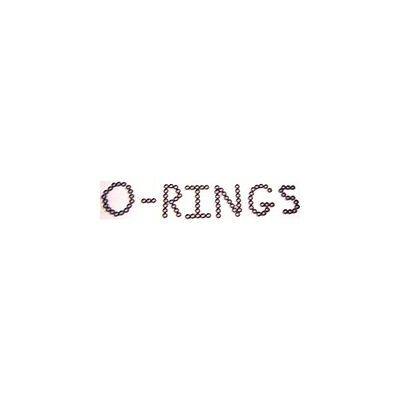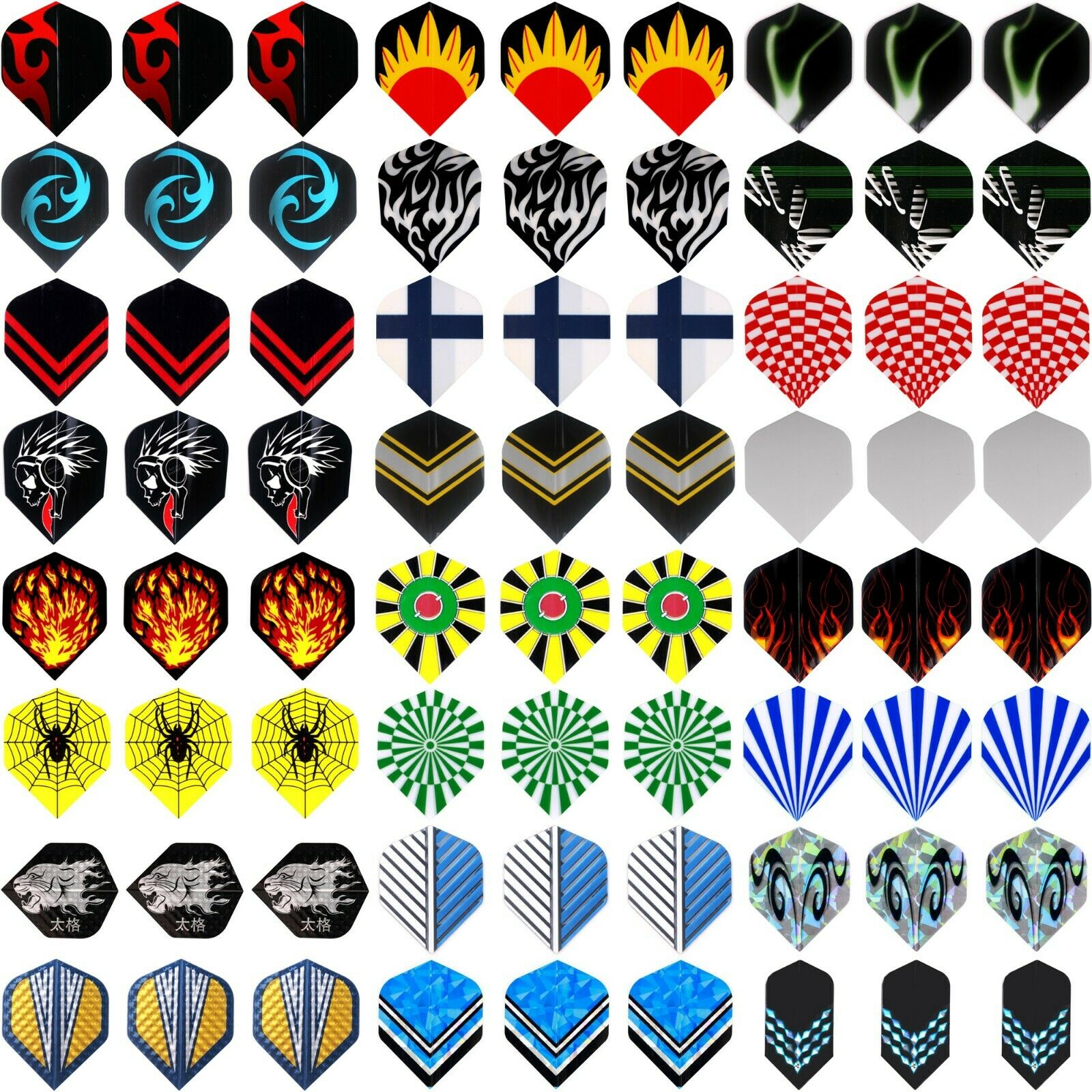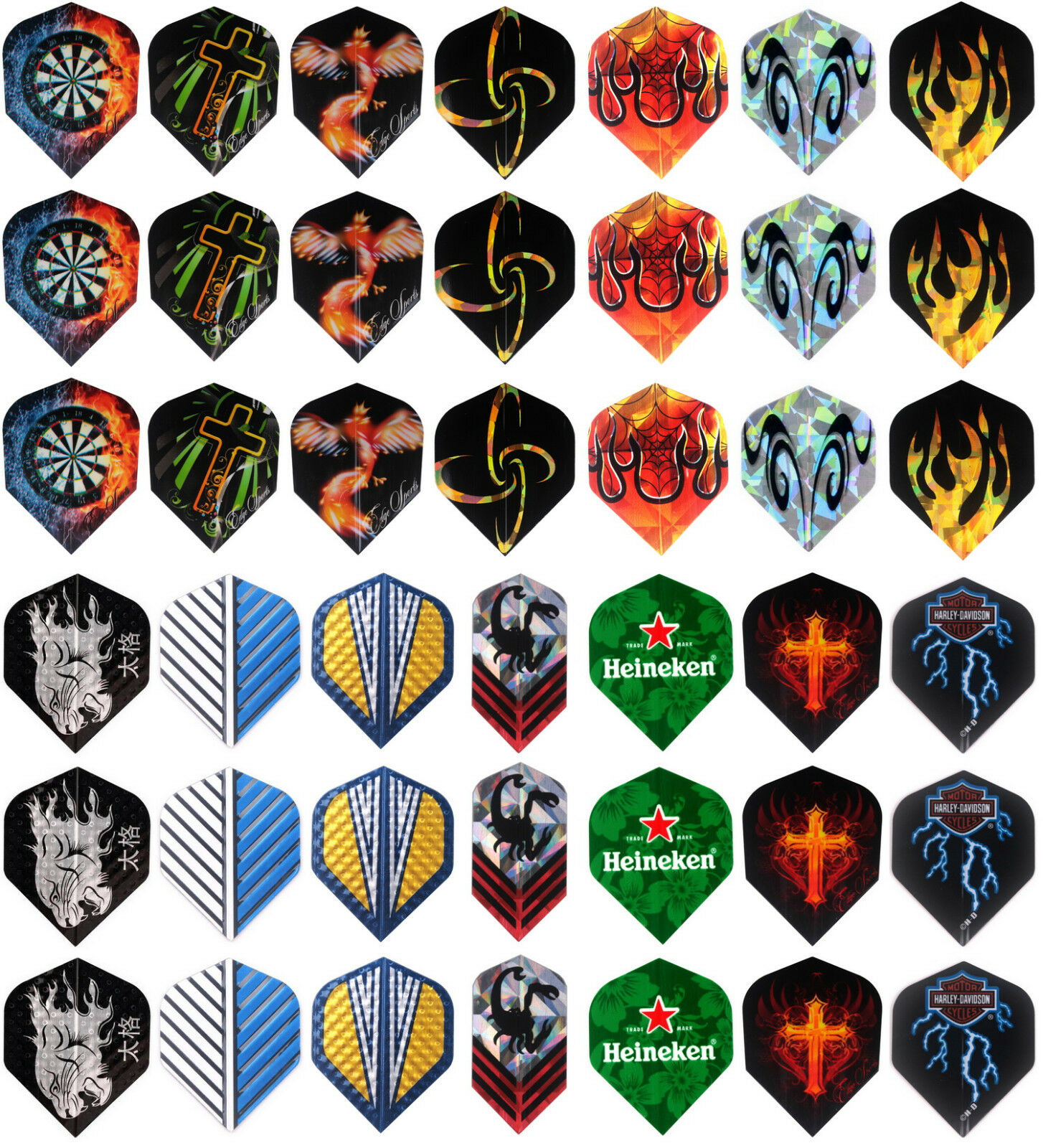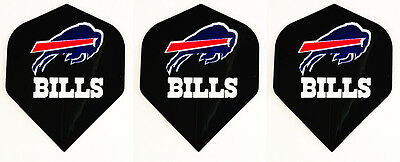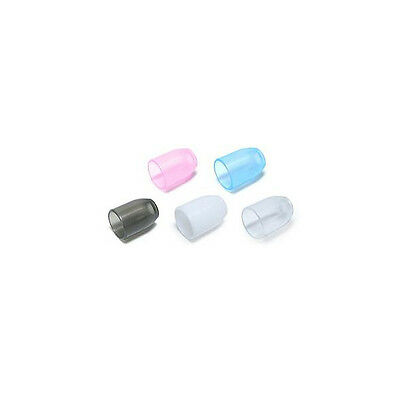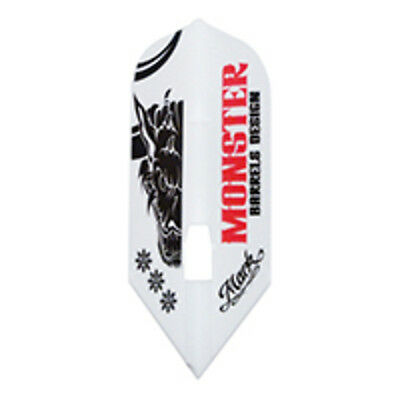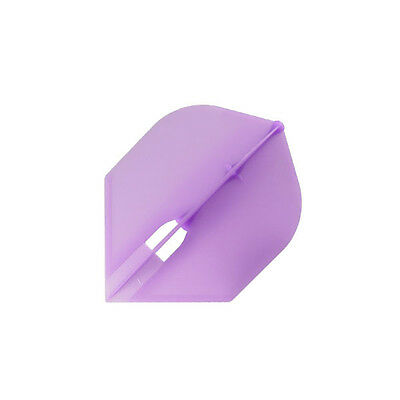Zmdi-facebook
Zmdi-twitter
Zmdi-youtube-play
Zmdi-instagram

This auction is for a bag of 50 o-rings 2ba size.
Don’t ya hate it when no one has o-rings and you have to keep tightening your shafts? Don’t pay $1.00 for 3 of them. Buy them wholesale for pennies on the dollar.
Please check out my Ebay store for lots of other dart supplies
ALL INFORMATION INCLUDED ON THIS PAGE IS PROVIDED BY DART BROKERS AS A COURTESY TO YOU. YOU WILL RECEIVE EXACTLY WHAT IS DESCRIBED ABOVE.
Dart Brokers
Darts, Billiards, Poker and More…
How Dart Brokers Came to Be
Hi, my name is Schude. Fellow darters know me by “3D.” I am the owner and operator of Dart Brokers.
I was approached in January of 2008 by a well known Pro Player and was asked if I would consider being the capital investor for a dart company that he was looking at starting. It took me about 2 minutes to make the decision. Darts has grown tremendously in the past decade. After about 3 months of constant research and many dollars spent I was prepared to open. I have grown to be one of the largest distributors in the USA. We carry an inventory of over $2.5 million in stock of just darts and dart supplies. I am convinced that I can beat any advertised price out there.
Welcome to Dart Brokers. We have over $2.5 million in stock of darts, dart boards, dart supplies, pool tables, billiard supplies and more. This enables us to match any of our competitors’ prices.
At Dart Brokers, we give you the option to fully customize your own darts to fit your individual style. From flights to tips,
you
choose what you want your darts to be.
If you are looking for darts or billiards in the Chicago, Illinois area, stop by our store and check out our supplies in person. Purchase $100 or more at the store and receive a free 30 minute dart lesson!
Dart Technique: The Basics
The following article explains the basic grip, stance and throwing techniques used in the game of darts.
Basic Requirements for The Grip
1.
Aim and Direct
: The chief objective of your grip should be to keep the end of the dart pointing up in each throwing stage.
2.
Solid and Relaxed
: Your grip should be stable, firm and should not put tension on the muscles of your fingers. When your fingers become white or you have difficulty releasing the dart due to excess muscle tension it is an indication that your grip is excessively tense. Keep in mind that Darts is a not a game of force, but rather touch. To keep your touch, grasp the dart just tight enough so it will not slide and you can maintain control when speeding up for the throw. The most common error is gripping the dart too firmly rather than too loosely.
3.
Use at Least Three Fingers
. Using more fingers will provide more regulation and control of the dart when gathering speed, but it makes the release more difficult as you will have to coordinate more fingers together. Finger coordination is an important aspect of release in your grip.
4.
Shape of Dart Barrel
. Not all types of grips will be suitable or functional on different barrel types. Longer barrels require the use of more fingers, while shorter barrels may require fewer fingers. Not only do you need to discover the right grip for you, but you need to discover the barrel that’s right for you as well.
5.
Say No to a Fist
. The fingers that are not included in your grip should stay comfortably spread apart from the fingers that are included. For example, if you are using four fingers when holding the dart and your smallest finger joins the other four, it will cause strain on the muscles of the other four fingers and will result in a poor release.
The Stance
“Right foot forward” Stance
. To better understand the stance, examine the position of a good player while they are aiming. Players set their eye, the dart and their target in a line. When a player makes a throw, he must try to maintain the movement of his arm in a plane of two dimensions. This decreases error by eliminating sideways movement of the arm.
The Throw
Distribution of Your Weight
. Your weight should rest chiefly on your forward foot while your rear foot holds adequate weight to thoroughly balance your posture. Keep in mind that, regardless of which weight distribution you use, your posture should be very firm and unshakable. The forward foot should constantly remain on the ground or floor.
Leaning
. The more you lean your body forward, the closer you are to the the board. Conversely, the farther you lean the more physically demanding and unbalanced your throw will become. If you bend forward excessively, it will result in back strains in the long run. Practice and try to find your own best position for throwing.
Balance
. Lifting your leg when throwing is discouraged. Always keep your feet on the floor.
Torso
. Your posture must ensure that your body is kept still during a throw.
Darts is a game of skill that requires constant practice on your part. You have to discover your own individual grip, stance and style of throw. Put it in your mind not to merely imitate the style of other dart players. You must discover your own style by yourself.
Try out the grips, stances and throwing styles of different individuals for the purpose of comparing and finding out which aspects are appropriate for you. Trying out various styles will also help you learn the technical connections between grip, stance and throw and enhance your skill. However, you should still find your own style, the one wherein you feel most comfortable and which results in improved playing. Achieve this through constant practice and keen observation of other accomplished or professional dart players. Look into their style of play and if you can use it with ease and comfort, then incorporate it into your own style.
Buying Darts: A Guide
When it comes to choosing the weight and style of your darts there really isn’t a wrong answer. Typically you will change darts after your first year of throwing, so don’t spend a lot until you know which dart fits you perfectly. Ultimately, it all comes down to what makes you feel most comfortable when you’re at the line. Here are a few guidelines to review before buying a new set of darts
Overview of Dart Types
There are many different darts to choose from: wooden darts, brass darts, nickel/silver darts and tungsten darts. The most popular dart for dart league throwers is the tungsten dart because a high-density tungsten dart will resist wear and creates a smaller barrel that allows tighter groupings of darts. Brass and nickel/silver darts are cheaper and made from softer metals and thus the knurling can wear down quickly from skin oils, friction and contact from other darts. When buying tungsten darts, make sure to pay attention to the writing on the packaging as the percentage of tungsten is very important to the quality of the dart. The higher the percentage the better, and more expensive, the dart. The main benefit of a high-quality tungsten dart is that the barrel will be smaller so you will be able to throw tighter groupings of darts, minimizing bounce outs.
Dart Weights
Your owe it to yourself to try out all of the different options available. Darts are available in weights from 12 grams to 50 grams. It is rare to see someone throwing darts heavier than 30 grams, but most dart organizations allow darts up to 50 grams. Make a visit to your local dart store and throw the same dart style in each weight class. The speed with which you throw the dart will help determine which weight to choose. The lighter the dart the harder/faster you have to throw. The location of the weight on the dart barrel is also important. Some darts are heavier towards the front of the dart (front-loaded) and others are back-weighted. Try them all and you’ll develop a feel for what works best for you.
Dart Barrel Grips
Your next step is to try out different barrel grips that are available in the weight you have chosen. Some dart barrels have heavy knurling and others are smooth. Typically, the heavier the knurling the easier it is to grip the dart. Extremely heavy knurling however, can cause darts to stick to your fingers and mess with your accuracy. For the typical dart player, there is more than one dart barrel that will work. Just make sure to choose the one that feels the best.
Dart Flights
There are many different sizes and styles of flights, including smooth and dimpled surfaces. Try them all out. The size and style of your flights can impact your game. Dimpled surfaces, for example, will help slow down and stabilize your darts. Try out all dart flight sizes and styles until you feel comfortable with your final configuration, but don’t be afraid to experiment as time goes by. The two most popular sizes are standard and slim.
Dart Shafts
Plastic or Nylon
: Inexpensive, available in many colors but break fairly easily. Good shafts until you start throwing tight groups and breaking lots of shafts. Materials are usually polycarbonate or nylon.
Composite
: Composite type shafts, like the Alamo or Quiver, have plastic bases that thread into the dart, combined with aluminum or other metal alloy tops that hold the flight. These are excellent shafts, quite durable, and will not vibrate loose as easily as solid aluminum shafts. Generally available with replaceable tops for economy and convenience.
Solid Aluminum
: More rigid and durable than plastic or composite Shafts. Solid aluminum shafts are available in many colorful styles, some with decorative engraved stripes, flutes, or spirals. May tend to vibrate loose, especially on heavy darts. When used with thick flights, such as dimplex or nylon, the slots may need to be pried open slightly with a dart tool or knife blade. Will normally bend instead of breaking when hit; just straighten for more use.
Spinning
: A variety of shaft styles are now available that allow the flight to turn out of the way when struck by another dart. Spinning shafts do nothing to improve the flight of the dart through the air, but they do allow tighter groups by letting the flights align with each other. Also, these shaft will greatly reduce torn flights and “rovin-hooded” shafts.
Dart Etiquette
Darts is considered a “gentleman’s sport”. There are certain things that are expected of players, scorekeepers and spectators. While there are some players that do not follow these guidelines, it is usually because they are rude, ignorant or sore losers. Better players will not like to associate with these kinds of players, and often such activity can lead to the better players giving the offenders a “taste of their own medicine”. Stick to these simple rules, and you will have a much more enjoyable game and make a lot more friends than enemies.
Sportsmanship in Darts
Generally, all dart players are good sportsmen. They will shake hands at the beginning of a match and wish each other good luck. Similarly, at the end of the game they will shake hands and say “good game” or “nice shooting”.
No Disctractions
Don’t go “ooh” and “aah” with each dart that is thrown.
Wait until all three darts have been thrown to say “good darts” or “right there”.
Do not make sudden movements in front of the shooter. Scorekeepers should remain statue-still while a player is throwing.
Even better, try to always stand behind the shooter outside their line of sight.
Spectators should try to keep movement and noise to a minimum while a player is shooting.
No one but the scorekeeper or a teammate should tell the shooter what has been hit.
What has been hit should only be announced if the shooter asks.
No one, except a teammate, should ever tell the player what to hit next.
Score Your Darts Before You Pull Them
By following this rule you can avoid many arguments. If you write down the score on the board before you pull the darts from the board, you can show your opponent what you threw if there is a discrepancy.
Don’t Be A Sore Loser
Appreciate what the other player has accomplished. If the other player bested you, live with it. Remember if you had thrown something really amazing, you’d be happy about it, so be happy for the other player too. Not only will this show that you are a lady/gentleman, but by keeping your own spirits up, you will remain relaxed and throw you’re next darts better than if you got angry or tense. I have witnessed many players lose a game purely because they got angry and their game suffered.
Dart Terminology
3 in a Bed
– Throwing 3 darts at the same number, in the same segmented area (such as 3 fat singles, or 3 triples or 3 doubles of the same number).
301
– Game which is usually double-in double-out where the goal is to score points and subtract them from 301 to get to zero, while doubling out
501
– Game which is usually single-in double-out where the goal is to score points and subtract them from 501 to get down to zero while doubling out
Aces
– Double ones in an ‘01 game
Arrows
– Darts
Barrel
– Metal portion of the dart that is gripped
Baseball
– Game that is on the back of some dart boards
Black Eye
– The center of the bulls-eye, worth 50 points
Black Hat
– Hitting three double-bulls in one throw
Blind Draw
– Tournament where you are matched up with a random player who has also entered the blind draw
Bombs
– Very large or heavy darts
Brass
– Metal used in the barrel of the dart, less dense then both nickel and tungsten
Breakfast
– Hitting 26 while aiming for the triple twenties. Originated from England where bed and breakfast was two and six pence
Bulls Out
– Winning the game with a double-bull
Bulls Eye
– Center of the board, divided into an inner ring which is the double bull and the outer ring which is the single bull
Bust or Busted
– Scoring too many points when trying to finish an ‘01 game
Century
– Score of 100 or more points in one round
Chalker
– Person who keeps score for a steel-tip game
Championship Board
– Dart board in which the doubles, triples and bulls-eyes are half the size of a normal board. This is a great board to practice on
Check-Out
– The successfully hit out for game shot, as in “He hit the 170 check-out”
Choke
– To miss the game shot
Chucker
– Someone who blindly throws their darts at the board
Clock
– Dartboard
Coin Toss
– Whomever wins the coin toss has the choice of diddling first or asking the opponent to “show me one”
Convertible
– Darts with interchangeable tips to play both steel-tip and electronic darts
Cork
– Middle of the board or bulls-eye
Cricket
– Game in which the object is to hit three each of the 15s, 16s, 17s, 18s, 19s, 20s and bulls-eyes
Dart
– The pointed, feathered object you throw, the act of throwing the dart
Dartitis or Yips
– Unexplained syndrome where a player cannot release his dart, which generally manifests itself in a total loss of rhythm and accuracy
Dead-Eye
– 3 Double-bulls in one turn
Diddle or Diddle for the Middle
– Throw a single dart at the middle of the board to see who goes first to start the game
Dirty Darts
– Slang for questionable strategy such as shooting an excessive number of points in cricket
Double Elimination
– Process by which the losing team of a tournament or competition move to the loser’s bracket where they may continue to play. The winner of the loser’s bracket plays the first place darter/team for the actual first place award
Double Ring
– The outer ring of the dart board worth double the “fat” number
Double-Out
– An ‘01 game in which the dart player must hit a double number to go out with zero points
Downstairs
– Bottom of the board
Easy In, Easy Out
– Not having to double-in for an ‘01 game, or having to double-out to end the game
Eights
– Slang for the 18s in cricket
Fall Out
– Slang for hitting a scoring dart while aiming for another number
Fat
– Large area of a number (between the double and triple ring)
Feathers
– Type of flights which are feathers
Fives
– Slang for the 15s in cricket
Flight
– The feather of the dart which makes the dart more aerodynamic
Game Shot
– The winning shot and words every darter playing on the tournament stage longs to hear
Good Group
– 3 darts grouped together
Hail Mary Dart
– See “Bail out”
Hat Trick
– Hitting the bull with all three darts
Hockey
– Throw line
Knurl
– Grooved or patterned surface on the barrel of the dart, preferred by some for gripping purposes
Leg
– One game in a match such as 2 out of 3 legs
Mark
– A scoring dart, usually in cricket. Hitting a triple would be three marks
Match
– Usually 2 out of 3 games wins the match
Mugs Away
– Losers of the previous game automatically start the next game
Nickel
– Metal used in the barrel of the dart, not as dense as tungsten but more dense than brass
Nines
– Slang for the 19s in cricket
Oche
– The throw line (pronounced “ockey”, rhymes with “dokey” as in “Okay Dokey”)
Pie
– Any scoring area on the dart board (or numbered surface). Each number may be considered a piece of pie
Plastic Darts
– Plastic darts used to play electronic darts. Plastic darts are lighter in weight than steel-tip darts
Point Monger
– Negative term for shooting excessive points in cricket
Pub Rules
– Local pub rules for any particular game of darts, as in pub rules for an 01 game when both darters have X1 might be that a bust doesn’t count, and the darter throws all three darts
Rail
– The wire (or spider web) of the steel-tip board, or the plastic rail on an electronic board
Right There
– Encouragement to the dart player who hit their darts close to the target. This is sometimes said in a joking, non-serious way, to a teammate whose darts were no where near their target…
Robin Hood
– Sticking one dart into the back (flight) of another dart
Round of Nine or RO9
– Three perfect darts in cricket such as any 3 triples in one round.
Round the Clock
– Hitting every number around the board
Round
– A three dart turn
Rubber
– The final leg of a three-leg game
Sevens
– Slang for 17s in cricket
Shaft
– The portion of the dart that screws into the barrel and holds the flight
Shanghai
– Hitting a single, double and triple of the same number in the same throw
Single Bull
– Outer ring of the bull worth 25 points
Single In
– In an ‘01 game where any combination of darts starts the game – you do not have to double in
Six Dart Out
– A perfect ‘301 double-in, double-out game
Sixes
– Slang for the 16s in cricket
Skunked
– Not getting in a double-in ‘01 game when your opponent finishes, or wins the game
Slice
– The wedge of a particular number on the board, as in a slice (of the pie)
Small Pie
– The small wedge of a number between the bull and the triple ring
Spider Web
– The wire assembly that divides the numbers on the dartboard
Splashing
– Throwing two darts at the board at the same time. The score is added together and then the opponent “splashes”. Whomever has the higher total goes first
Steady
– Score of 60
Three in a Bed
– Throwing 3 darts at the same number, in the same area (such as 3 fat singles, or 3 triples or 3 doubles of the same number)
Toe Line
– Line from which you throw
Ton 80
– Hitting three triple twenties
Ton
– Score of 100 or more points in one round
Tops
– Double 20s or 40 points
Triple Ring
– The inner ring of the dart board which is worth triple the “fat” number
Tungsten
– Dense metal used in dart barrels
Two and Six
– Scoring 26 points in a throw, also known as breakfast
Upstairs
– The upper portion of the board
White Horse
– Scoring three virgin (untouched) triples in Cricket on your first turn.
Wiring
– Bouncing a dart off of a wire
Dart Brokers’ Stock of Darts and Billiard Supplies Features Top Brands Including:
GLD
Fat Cat Pool Tables
Laser Darts
“Black Widow” Soft & Steel Tip Darts
Harrows Flights
Viper Dart Boards
Casemaster Dart Cases
Pentathlon
Ruthless
Amerithon
Dimplex
Elkadart
Marathon Flights
Hot Shot
Quazar
Unicorn
Bottlesen
Power Point
Metroline
Dart World

